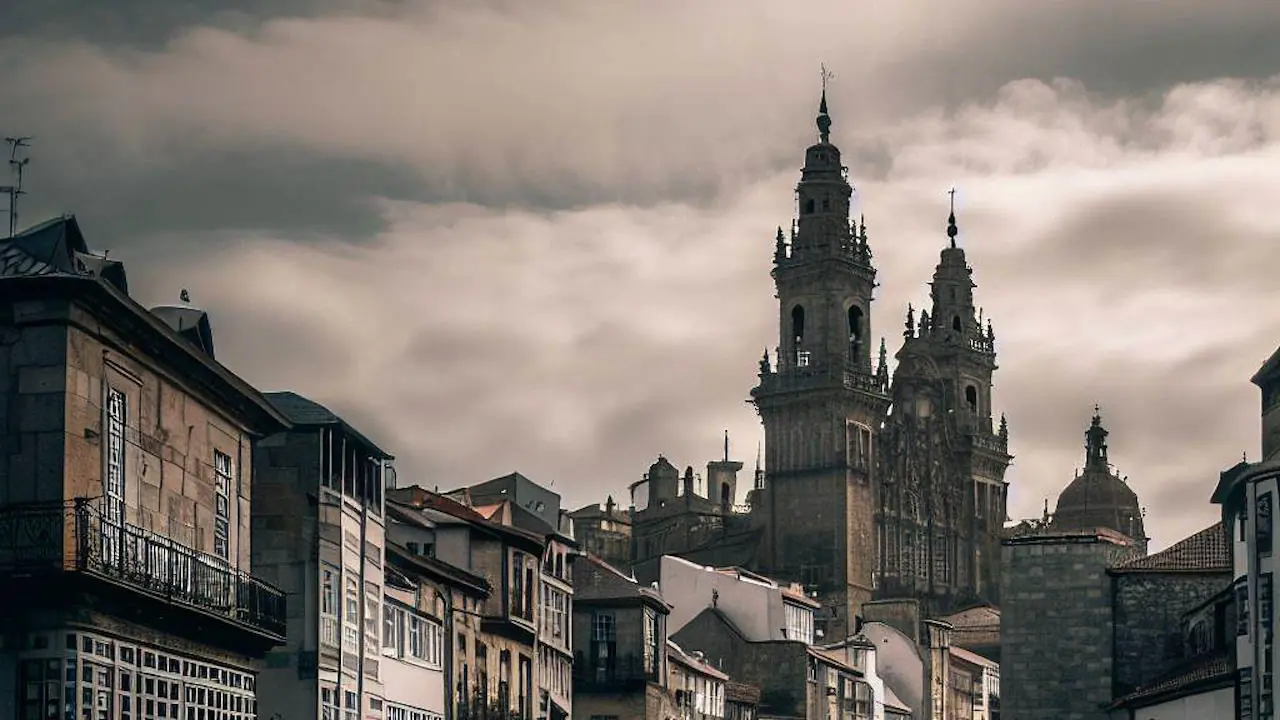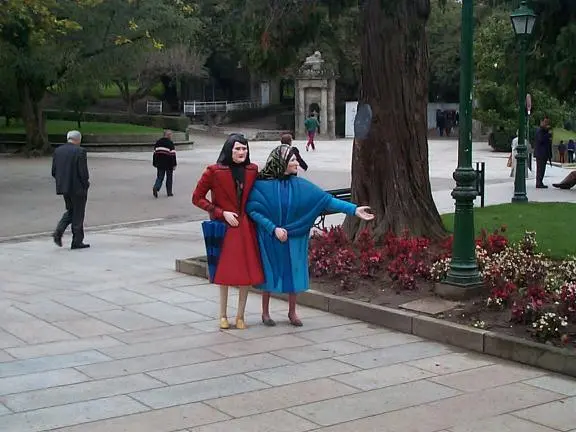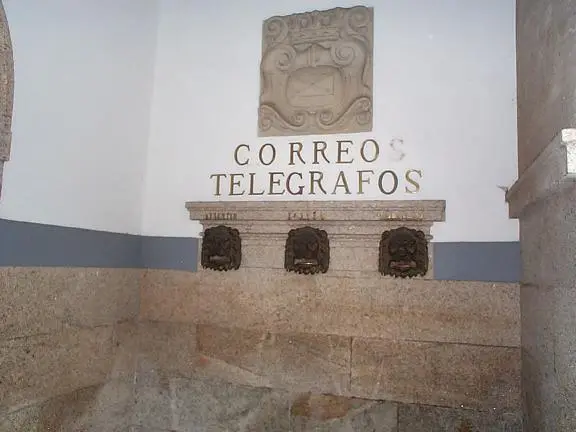Camino Francés: Monte De Gozo to Santiago de Compostela - Stage 27

By: Simon Kemp, Editor
The 4.7km (2.9 mile) Monte de Gozo to Santiago de Compostela stage is the final stage of the Camino Francés and begins with a tranquil descent from Monte de Gozo before entering Santiago’s vibrant cityscape. As pilgrims wind through the bustling streets of San Lazaro and the city center, they’re treated to a blend of modern and traditional Galician architecture, culminating in the narrow, cobblestone pathways of the old city.
The journey concludes at the iconic Santiago de Compostela Cathedral, marking the end of the Camino. Despite the stage’s urban terrain and relative brevity, the mix of emotions and anticipation can make this final stretch uniquely challenging.
Map of Monte de Gozo to Santiago de Compostela
Route Description: Monte de Gozo to Santiago de Compostela
Stage Distance: Approximately 4.7 kilometers (2.9 miles)
A. Detailed Breakdown of the Route
1. Monte de Gozo to San Lazaro (1.9 km, 1.1 miles)
Your journey starts at Monte de Gozo , the hill that grants pilgrims their first view of the Santiago de Compostela Cathedral. The trail from here winds downhill, traversing a peaceful area of countryside before entering the district of San Lazaro.
2. San Lazaro to City Center (2.1 km, 1.3 miles)
Once in San Lazaro, you find yourself on the outskirts of the bustling city of Santiago de Compostela. From here, the route weaves through city streets, showing you a mix of modern buildings and traditional Galician architecture. This part of the trail is a good moment to adjust to the city’s lively pace after so much time spent walking quieter rural and natural areas.
3. City Center to Santiago de Compostela Cathedral (0.7 km, 0.4 miles)
The final stretch of your Camino journey takes you through the old city’s winding, narrow cobblestone streets. The magical ambiance, created by historic buildings and the anticipation of reaching your goal, adds to the exhilarating experience. And then, finally, the majestic Santiago de Compostela Cathedral appears before you, marking the end of your pilgrimage.
B. Terrain and Elevation
The terrain of this stage is a mix of peaceful countryside and urban landscapes. From the gentle downhill path departing Monte de Gozo, the route transitions into the outskirts of the city before leading you into the heart of the old city.
C. Highlights
Monte de Gozo
Known as the ‘Hill of Joy,’ Monte de Gozo is where pilgrims traditionally had their first glimpse of the Santiago de Compostela Cathedral, a sight that stirs deep emotions after their long journey.
Santiago de Compostela
The endpoint of your pilgrimage, Santiago de Compostela, is rich with culture and history. The old city offers an array of stunning architecture, vibrant street life, and significant historical sites.
Santiago de Compostela Cathedral
The Santiago de Compostela Cathedral, where the relics of Saint James the Apostle are believed to be, is the final destination of your Camino journey. The sight of the cathedral is a powerful moment, embodying both the end of the physical journey and the culmination of a deeply personal spiritual journey.
D. Potential Challenges
While this stage isn’t physically challenging given its relatively short distance and mostly downhill or flat terrain, the emotional aspect of reaching the end of the journey can be significant. Ensure you take the time to process this experience, reflecting on your journey and the accomplishment it represents.
E. Rest Stops
The city of Santiago is full of opportunities for rest and celebration. There are numerous cafés, restaurants, and shops where you can pause and enjoy the city’s atmosphere. Upon reaching the cathedral, there’s no rush—take the time you need to explore, reflect, and relish the completion of your journey.
Departure point: Monte de Gozo
A beacon for those on the Camino Frances trail, Monte de Gozo, known as ‘Mountain of Joy,’ is a site filled with deep emotion. It serves as the final hill and rest point before reaching Santiago de Compostela, offering pilgrims their inaugural view of the city’s remarkable cathedral.
Vista of Santiago
Traveling the Camino involves weeks of physical exertion coupled with personal reflection and spiritual awakening. It’s on the summit of Monte de Gozo that pilgrims can finally spot the iconic spires of Santiago de Compostela Cathedral, a sight that stirs feelings of joy, accomplishment, and tranquility. This initial glimpse of Santiago marks the nearing end of a profound and transformative journey.
Pope John Paul II Monument
Adding another layer to Monte de Gozo’s depth is the monument dedicated to Pope John Paul II, commemorating his visit during the 1989 World Youth Day. This site serves as a point of reflection, prayer, and admiration of Santiago’s panoramic views. The monument is a steadfast reminder of the Camino Frances’s enduring spiritual significance across the globe.
Albergues and Hostels
Monte de Gozo boasts a well-equipped lodging facility to house the flux of pilgrims it welcomes. Its albergue, Albergue de Monte do Gozo, stands as one of the most extensive on the Camino Frances route. This bustling complex, accommodating hundreds of pilgrims, serves as a common meeting place, allowing travelers to exchange tales, shared experiences, and eagerly await the final stretch into Santiago.
There are several accommodations available for pilgrims:
- Albergue Monte do Gozo: This is a private hostel that provides a comfortable stay for pilgrims It is located at Rúa do Gozo, 18, 15820 Santiago de Compostela. You can contact them at +34 881 255 386.
- Monte do Gozo Hostel: This is more than just a pilgrims’ hostel. It is a unique complex located in a vast natural area, from which you can see the towers of the Cathedral for the first time.
- Albergue Juvenil Monte do Gozo: This is a very large hostel where you can also find a bar and a restaurant. The price per night is 6 Euro, and you will be accommodated in rooms for up to 8 people.
These accommodations provide a place for pilgrims to rest and share their experiences before the final stretch into Santiago
Although Monte de Gozo might not offer the traditional allure of a quaint village or bustling town, its contribution to the Camino Frances experience is undeniable. This ‘Mountain of Joy’ encapsulates a cocktail of anticipation and introspection, marking the near culmination of a journey that marries physical endurance with spiritual exploration. For many, Monte de Gozo provides not just a visual treat of Santiago, but also a window into their personal odyssey and inner transformations.
Camino Francés Diary: Route segment: 27
Friday 3rd November 2000
And that’s the end of my first and second Camino. In the words of Forest Gump, “That’s all I have to say about that…” But I did go back again in May 2001 and walked another even stranger Camino and found the “heart” love of my life. But that’s another story. I guess, now I head back to Pamplona and then Madrid to take a plane home!
I will write about it some time and please come back from time to time to check if I have updated it yet. Also I will be walking the other half of my third Camino with Antje in May 2002. Maybe I will see you there ?


Destination: Santiago de Compostela
Nestled in the verdant landscapes of Galicia in northwest Spain, Santiago de Compostela is the final destination on the Camino Frances pilgrimage. Renowned for its grand cathedral and deep-rooted history, this city vibrates with a unique spirituality and cultural richness that leaves an indelible mark on its visitors.
Historical Significance
Founded in the 9th century, Santiago de Compostela stands as a potent symbol of Christian resistance against Islamic rule during the Middle Ages. The city owes its name to Saint James the Greater, with ‘Santiago’ meaning Saint James, and ‘Compostela’ deriving from ‘Campus Stellae,’ meaning Field of Stars. This name reflects the legend of Saint James’s remains being discovered under a field of stars. As a result, Santiago de Compostela has long been a significant destination for Christian pilgrims.
Santiago de Compostela Cathedral
The Cathedral of Santiago de Compostela is undeniably the city’s most prominent landmark. An awe-inspiring blend of Romanesque, Gothic, and Baroque architecture, it has offered solace and inspiration to pilgrims since the 11th century. Pilgrims eagerly anticipate the daily Pilgrim’s Mass, a profound spiritual event that culminates in the swinging of the Botafumeiro, a giant incense burner, through the cathedral’s transept.
The City’s Rich Culture
Beyond its religious importance, Santiago de Compostela shines as a UNESCO World Heritage City with an animated cultural scene. Its enchanting Old Town, a maze of narrow, cobblestone lanes lined with traditional shops, inviting cafes, and historical buildings, exudes an inimitable charm. The city is also known for the University of Santiago de Compostela, one of Spain’s oldest institutions of higher learning, which infuses the city with a youthful, vibrant spirit.
Gastronomy
The city’s culinary scene is a testament to the rich gastronomy of Galicia. Seafood plays a central role, with octopus (‘pulpo a la gallega’) being a local favourite. Vegetable dishes, such as ‘pimientos de padrón,’ and Galician cheeses and breads are also popular. No visit is complete without trying the ‘tarta de Santiago,’ an almond cake that bears the cross of Saint James, a delicious tradition that concludes many a pilgrim’s journey.
The Camino Frances culminates in Santiago de Compostela, but the end of this journey also marks the beginning of a new cultural adventure. With its blend of historical and spiritual significance, vibrant culture, and enticing gastronomy, Santiago de Compostela offers a rewarding finale to the challenging but enlightening pilgrimage.